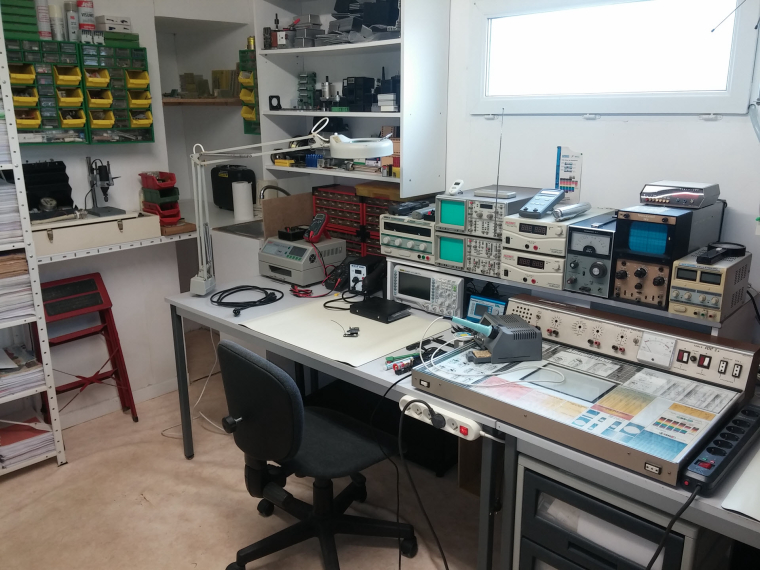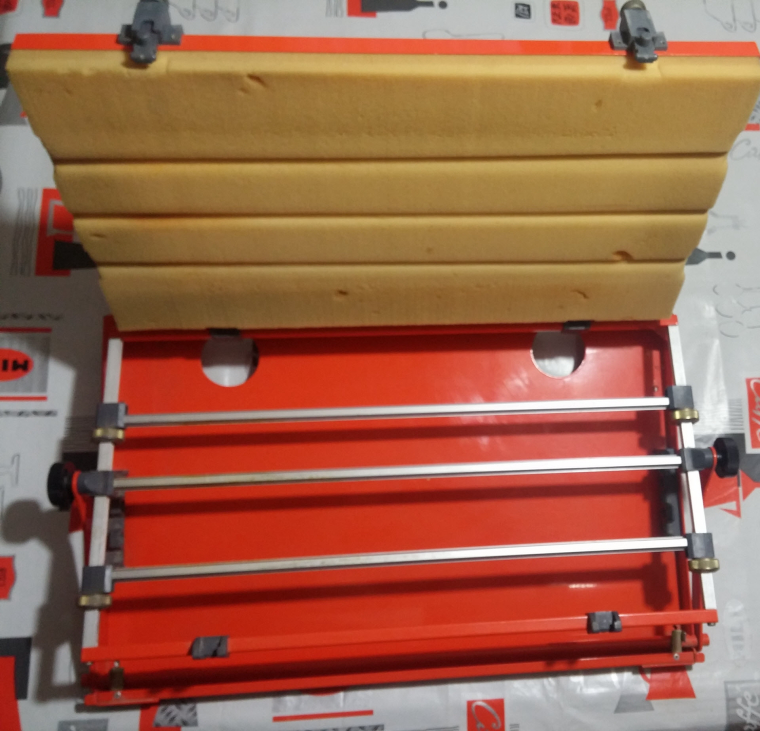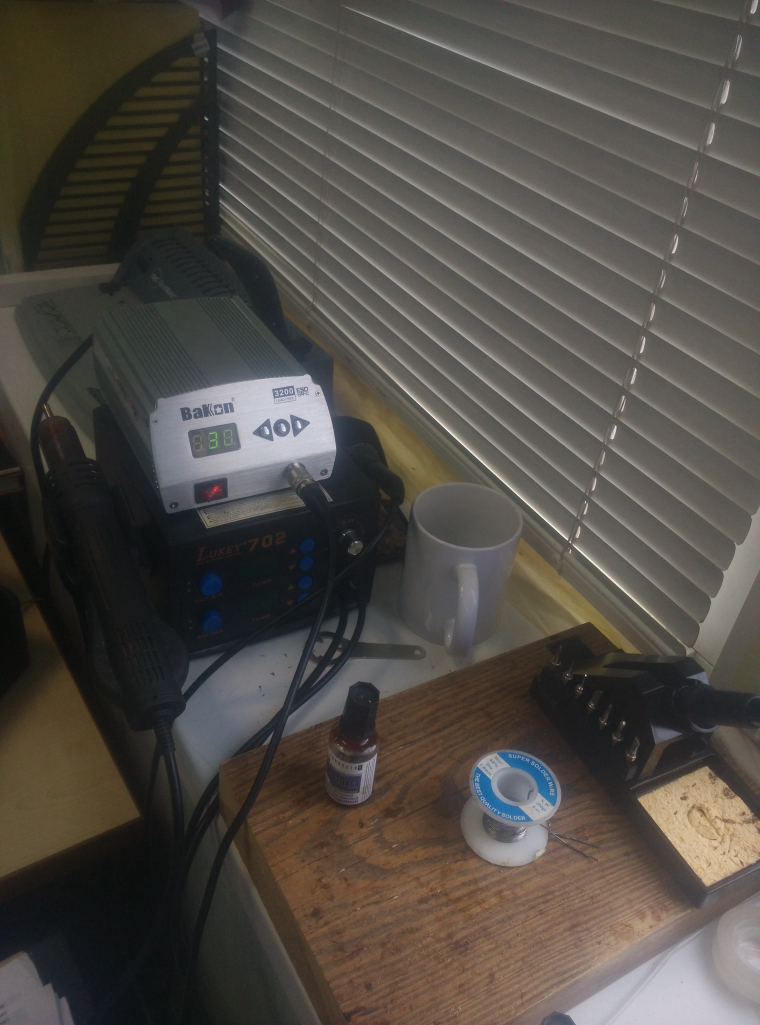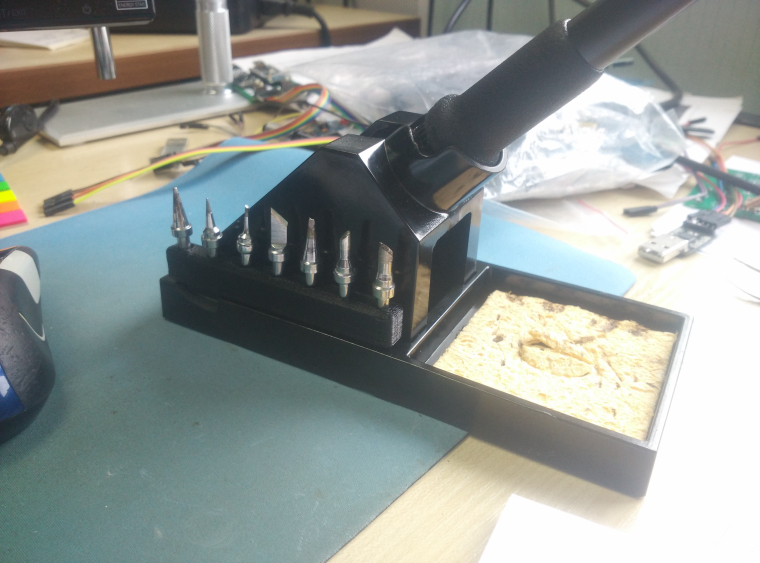Your workshop :)
-
if you want the case it costs 10$. The one I posted it seems to have pretty much the same specs, but it can detect also IR and probably some more components. It also comes with a lithium battery instead of the classic 9V, color screen and the case looks much better :)
@gohan Be aware that there are quite a few different versions around. The one I posted has a rotary encoder to select and operate the pwm and frequency functions. The perspex casing fits well with the rest of the nerdy testboxes I own (dummy load, power supply, a few function generators, frequencycounter ) All a lot of functionality for very little..
-
I noticed the many of you have an oscilloscope on their desk. What exactly do you use these for? There seems to be nothing under 200$ and I wonder if it is worth it.
-
I noticed the many of you have an oscilloscope on their desk. What exactly do you use these for? There seems to be nothing under 200$ and I wonder if it is worth it.
@Jan-Gatzke For MySensor I use it mostly for measuring response times and get a general idea of what is happening timewise. Especially if you have multiple event happening at the same time. Also for getting a grip on low power

it gives a lot of information which would be very hard to measure with any other instrument. (for my other hobby, analog audio design, I couldn't live without it. ;-))
A few considerations:
- It can be rather complicated using a scope in first instance. (a steep learning curve)
- Unless you are just curious and want to educate yourself I would strongly disencourage buying a cheap instrument. Better to study a few manuals of serious > €300 instruments, save a little and buy the thing you need (or can't resist). 10 years ago you had to put down > €1000 for something reasonable.
-
@Jan-Gatzke For MySensor I use it mostly for measuring response times and get a general idea of what is happening timewise. Especially if you have multiple event happening at the same time. Also for getting a grip on low power

it gives a lot of information which would be very hard to measure with any other instrument. (for my other hobby, analog audio design, I couldn't live without it. ;-))
A few considerations:
- It can be rather complicated using a scope in first instance. (a steep learning curve)
- Unless you are just curious and want to educate yourself I would strongly disencourage buying a cheap instrument. Better to study a few manuals of serious > €300 instruments, save a little and buy the thing you need (or can't resist). 10 years ago you had to put down > €1000 for something reasonable.
@AWI Troubleshooting power probolems with the nrf24 is a good example, thx. I think at the beginning it is more a nice to have than a must have. I am always curios for such things. Still I don't want to buy trash. I will read a bit and watch ebay for good offers. Thx for your explanation.
-
As i'm actually tidying up thing, i can show some pics where i spend some tinkering time.

I'm planning to renovate it, because i'm also missing place for my 3d printer and some others stuff.
There is a lathe and a drill but it's for quick hurry work, there is another room for more dirty mechanical stuff.. but i can't show you, it's dirty :)
My favorite tools :- my super mini TS100 solder iron. But if you ask me, for tiny SMD like DFN for instance, i prefer my Weller Magnastat with a 0.2mm tip. The tip is thinner even if i've bought the thinnest tip for the TS100.
- hacked Rigol Ds1054Z. Really worth the price!
- hacked T962 reflow oven. Very cool too (better for leaded solder though)
- smd books
- my magnifier of course!
for the rest, there are also great tools like power supply, a spectrum analyzer, generators..

My 1st 3d printer, i like it, works very well. I'm planning to build a new, bigger and enclosed one.Talking about soldering vise, i have this old tool i don't use it often, but when i need it, i'm happy to have it.

I'm pretty sure this is not hard to reproduce with some T-Slots and so on ;)When you have a 3d printer, this thingiverse design can be helpful, for debugging stuff, or can be used for soldering but with care else plastic would melt.
http://www.thingiverse.com/thing:801279 -
I've been using new induction solderind gun for the last month. It is fantastiс. :satisfied: It has 120W power and warms up to 330С during 6-8s :astonished:


-
I've got the feeling this thread is going to be extreme expensive for me. :)
-
As i'm actually tidying up thing, i can show some pics where i spend some tinkering time.

I'm planning to renovate it, because i'm also missing place for my 3d printer and some others stuff.
There is a lathe and a drill but it's for quick hurry work, there is another room for more dirty mechanical stuff.. but i can't show you, it's dirty :)
My favorite tools :- my super mini TS100 solder iron. But if you ask me, for tiny SMD like DFN for instance, i prefer my Weller Magnastat with a 0.2mm tip. The tip is thinner even if i've bought the thinnest tip for the TS100.
- hacked Rigol Ds1054Z. Really worth the price!
- hacked T962 reflow oven. Very cool too (better for leaded solder though)
- smd books
- my magnifier of course!
for the rest, there are also great tools like power supply, a spectrum analyzer, generators..

My 1st 3d printer, i like it, works very well. I'm planning to build a new, bigger and enclosed one.Talking about soldering vise, i have this old tool i don't use it often, but when i need it, i'm happy to have it.

I'm pretty sure this is not hard to reproduce with some T-Slots and so on ;)When you have a 3d printer, this thingiverse design can be helpful, for debugging stuff, or can be used for soldering but with care else plastic would melt.
http://www.thingiverse.com/thing:801279 -
As i'm actually tidying up thing, i can show some pics where i spend some tinkering time.

I'm planning to renovate it, because i'm also missing place for my 3d printer and some others stuff.
There is a lathe and a drill but it's for quick hurry work, there is another room for more dirty mechanical stuff.. but i can't show you, it's dirty :)
My favorite tools :- my super mini TS100 solder iron. But if you ask me, for tiny SMD like DFN for instance, i prefer my Weller Magnastat with a 0.2mm tip. The tip is thinner even if i've bought the thinnest tip for the TS100.
- hacked Rigol Ds1054Z. Really worth the price!
- hacked T962 reflow oven. Very cool too (better for leaded solder though)
- smd books
- my magnifier of course!
for the rest, there are also great tools like power supply, a spectrum analyzer, generators..

My 1st 3d printer, i like it, works very well. I'm planning to build a new, bigger and enclosed one.Talking about soldering vise, i have this old tool i don't use it often, but when i need it, i'm happy to have it.

I'm pretty sure this is not hard to reproduce with some T-Slots and so on ;)When you have a 3d printer, this thingiverse design can be helpful, for debugging stuff, or can be used for soldering but with care else plastic would melt.
http://www.thingiverse.com/thing:801279@scalz - that might be the most equipped workshop I have ever seen! So cool!
-
@gohan
clone soldering station? I have no xp about clones, but i know genuine Hakko have great reviews.
Problem with clones is they often have a bad temperature regulation, meaning you set to a temperature, and you get something too low or too high at the tip. Not so cool.
This youtube video is interesting to see the difference (not about hakko though)
https://www.youtube.com/watch?v=DEEaLMv6dog
It confirmed to me to buy the TS100 but that's also because i wanted something mobile.
Not so easy to advice a solder station depends on what you need, perhaps hakko clone are reasonable choice but one sure thing, is clones or not, the tip quality is very important, and better to choose genuine for this.@dbemowsk yep this is corexy. i choosed corexy system for its advantages. My next one will be another corexy (was tempted by delta) but this time 35x35cmx30 and with V-Slots and V-Wheels..
@sundberg84 yes very geek workshop, for maker, i enjoy it sure :)
-
@gohan
clone soldering station? I have no xp about clones, but i know genuine Hakko have great reviews.
Problem with clones is they often have a bad temperature regulation, meaning you set to a temperature, and you get something too low or too high at the tip. Not so cool.
This youtube video is interesting to see the difference (not about hakko though)
https://www.youtube.com/watch?v=DEEaLMv6dog
It confirmed to me to buy the TS100 but that's also because i wanted something mobile.
Not so easy to advice a solder station depends on what you need, perhaps hakko clone are reasonable choice but one sure thing, is clones or not, the tip quality is very important, and better to choose genuine for this.@dbemowsk yep this is corexy. i choosed corexy system for its advantages. My next one will be another corexy (was tempted by delta) but this time 35x35cmx30 and with V-Slots and V-Wheels..
@sundberg84 yes very geek workshop, for maker, i enjoy it sure :)
-
@gohan
clone soldering station? I have no xp about clones, but i know genuine Hakko have great reviews.
Problem with clones is they often have a bad temperature regulation, meaning you set to a temperature, and you get something too low or too high at the tip. Not so cool.
This youtube video is interesting to see the difference (not about hakko though)
https://www.youtube.com/watch?v=DEEaLMv6dog
It confirmed to me to buy the TS100 but that's also because i wanted something mobile.
Not so easy to advice a solder station depends on what you need, perhaps hakko clone are reasonable choice but one sure thing, is clones or not, the tip quality is very important, and better to choose genuine for this.@dbemowsk yep this is corexy. i choosed corexy system for its advantages. My next one will be another corexy (was tempted by delta) but this time 35x35cmx30 and with V-Slots and V-Wheels..
@sundberg84 yes very geek workshop, for maker, i enjoy it sure :)
-
@scalz - I would love to have your setup dude! Your coreXY printer looks a little bulky underneath and taking up some build volume but i'm guessing you never hit a problem with that anyway so no issues. I too like the CoreXY designs. I think my next one will be a D-Bot as i've printed about 6 sets of parts for that printer for people and it seems a very solid printer. My current one is a Wilson 2 design (will upload some more photos here soon of my equipment), but would like a second one. However, as i still live at home with my parent, having an area like you have is just not available for me right now :(
I'm a Hakko user, and i would like to ask you to not purchase a fake. Not only are they bad at temperature regulation, they are also very unsafe from what i have read. Purchase at your own risk! I use a FX888D, i would prefer the analogue version with the knob on the front but this does the same but with a slightly more awkward temperature adjustment. Heat-up time is very quick and that is the huge added bonus for me.
